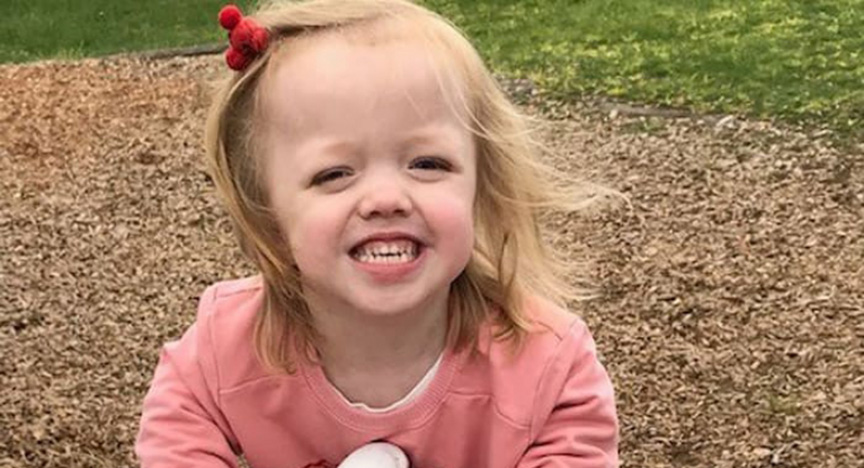
Krysten Thompson’s daughter Maggie, 5, was born with achondroplasia and is learning how to make her way in a world made for much taller people. Here, Krysten shares a few things her family has learned about life with the condition so far.
Hearing that there’s something wrong with your baby is actually much harder to digest than the news that your child has dwarfism. Once you have a diagnosis, you can act on it and move forward.
One of the difficulties in learning that your child has achondroplasia (a type of skeletal dysplasia otherwise known as dwarfism) is then finding out about the many other conditions that can come with it. What does this mean for your child? Your family? The future?
Diagnosis of skeletal dysplasia varies according to the condition, from occurring in utero as early as 20 weeks to taking months after birth to work out just what it is about a baby that’s different. Maggie was diagnosed when I was about 31 weeks pregnant, through a series of specialist ultrasounds. It was stressful, but it was also a great opportunity to get informed and seek support prior to her birth.
At birth, she was initially diagnosed via X-ray as having the ‘features consistent with achondroplasia’ but it wasn’t until she was two-years-old that genetic counselling and blood tests confirmed the standard mutation that results in the condition.
I always thought that her first surgery would be something common, like grommets. However, after a series of MRIs monitoring her growth, Maggie underwent surgery to remove part of her skull and first vertebrae when she was just 14 months old. This relieved pressure in her skull caused by a ‘blockage’, as her spinal cord was too big for the hole it needed to exit her skull. This was scary for us as parents, but Maggie bounced back in no time.
The interventions a child with dwarfism needs vary as much as they do with an average-height child. Some have more spinal issues, some have bowing of the legs, some have both, some have neither. I think it’s important that we just look at the child we have in front of us and not compare them too much to other children, with or without dwarfism. We just need to respond to their unique needs.
Anyone could give birth to a child with dwarfism. We all know it, but we somehow don’t actually believe it will happen to us. Eighty per cent of short statured people have two average-height parents. Eighty per cent of short-statured people have Achondroplasia. That makes us seem a lot more ‘normal’ than the notion that achondroplasia occurs in approximately 1 in 30,000 births!
Kids with achondroplasia have one tiny mutation in one gene on one chromosome. It’s like playing a piano concerto and hitting one wrong note. Everyone notices the one note, not all the rest that were played perfectly. Maggie is a perfect representation of this. She is a normal five-year-old, who loves watching television, is a sucker for marketing, loves her friends, and playing in the sandpit. She loves drawing, dancing, singing and taking selfies. Sometimes she’s naughty and other times she disarms you with how kind and loving she can be.
At the moment, she’s fully aware that she’s ‘cute’. She’s aware that she’s small and can tell you she has short arms and legs. She’s met and spent time with other short-statured people of various ages and diagnoses, but she doesn’t really connect herself with them yet. It will take years for her to fully understand.
She’s not going to enjoy being stared at or mocked. She doesn’t like it now when people categorise her as a baby or toddler. Our wish for her is that people would notice all the perfect notes that make up the whole of her being, not focus on the one wrong note. We encourage her, when she sees someone with an obvious difference, not to stare but to say hello with a smile. It would be nice for others to do the same.